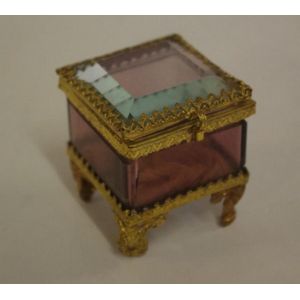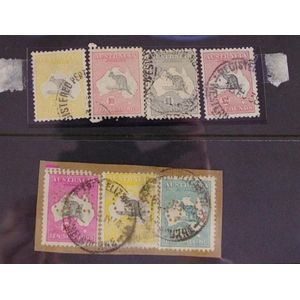Victorian Gothic Revival Oak Stools with Needlework Tops
A pair of Victorian oak Gothic revival stools late 19th century with needlework covered tops height 32 cm, width 50 cm, depth 40 cm
You must be a subscriber, and be logged in to view price and dealer details.
Subscribe Now to view actual auction price for this item
When you subscribe, you have the option of setting the currency in which to display prices to $Au, $US, $NZ or Stg.
This item has been sold, and the description, image and price are for reference purposes only.
- Gothic Style, Furniture - Gothic style furniture refers to pieces that are designed and crafted in the Gothic architectural and decorative style that was popular in Europe from the 12th to the 16th centuries. This style of furniture is characterised by its elaborate and ornate details, as well as its use of dark and heavy woods, such as oak and walnut.
Gothic style furniture often features intricate carvings and embellishments, including pointed arches, quatrefoils, and tracery. The style also frequently incorporates elements such as coats of arms, shields, and religious symbols. Gothic furniture often has a heavy and substantial appearance, and the pieces are often finished with a dark stain to accentuate the detailed carving and embellishments.
The furniture items can be quite large and imposing, and they are often used as statement pieces in large rooms. Gothic furniture can be a striking and dramatic addition to any space, and it is often appreciated by those who have an interest in medieval and historical design. - Victorian Period - The Victorian period of furniture and decorative arts design covers the reign of Queen Victoria from 1837 to 1901. There was not one dominant style of furniture in the Victorian period. Designers used and modified many historical styles such as Gothic, Tudor, Elizabethan, English Rococo, Neoclassical and others, although use of some styles, such as English Rococo and Gothic tended to dominate the furniture manufacture of the period.
The Victorian period was preceded by the Regency and William IV periods, and followed by the Edwardian period, named for Edward VII (1841 ? 1910) who was King of the United Kingdom and the British Dominions and Emperor of India for the brief period from 1901 until his death in 1910. - Oak - Native to Europe and England, oak has been used for joinery, furniture and building since the beginning of the medieval civilisation. It is a pale yellow in colour when freshly cut and darkens with age to a mid brown colour.
Oak as a furniture timber was superceded by walnut in the 17th century, and in the 18th century by mahogany,
Semi-fossilised bog oak is black in colour, and is found in peat bogs where the trees have fallen and been preserved from decay by the bog. It is used for jewellery and small carved trinkets.
Pollard oak is taken from an oak that has been regularly pollarded, that is the upper branches have been removed at the top of the trunk, result that new branches would appear, and over time the top would become ball-like. . When harvested and sawn, the timber displays a continuous surface of knotty circles. The timber was scarce and expensive and was used in more expensive pieces of furniture in the Regency and Victorian periods.
This item has been included into following indexes:
Visually similar items

Small ormolu jewel box 4.5 cm wide
Sold by
in
for
You can display prices in $Au, $US, $NZ or Stg.

Seven Australian roo stamps including 1 x 2 pounds, 1 x 1 pound, 2 x 10 shillings & 2 x 5 shillings & 1 x 1 shilling
Sold by
in
for
You can display prices in $Au, $US, $NZ or Stg.

French style Chinese lidded trinket box, makers mark to base, 13 cm x 10 cm, 6 cm high approx.
Sold by
in
for
You can display prices in $Au, $US, $NZ or Stg.

Juliet Peter, four tile panel, 57 cm length (detail)
Sold by
in
for
You can display prices in $Au, $US, $NZ or Stg.
